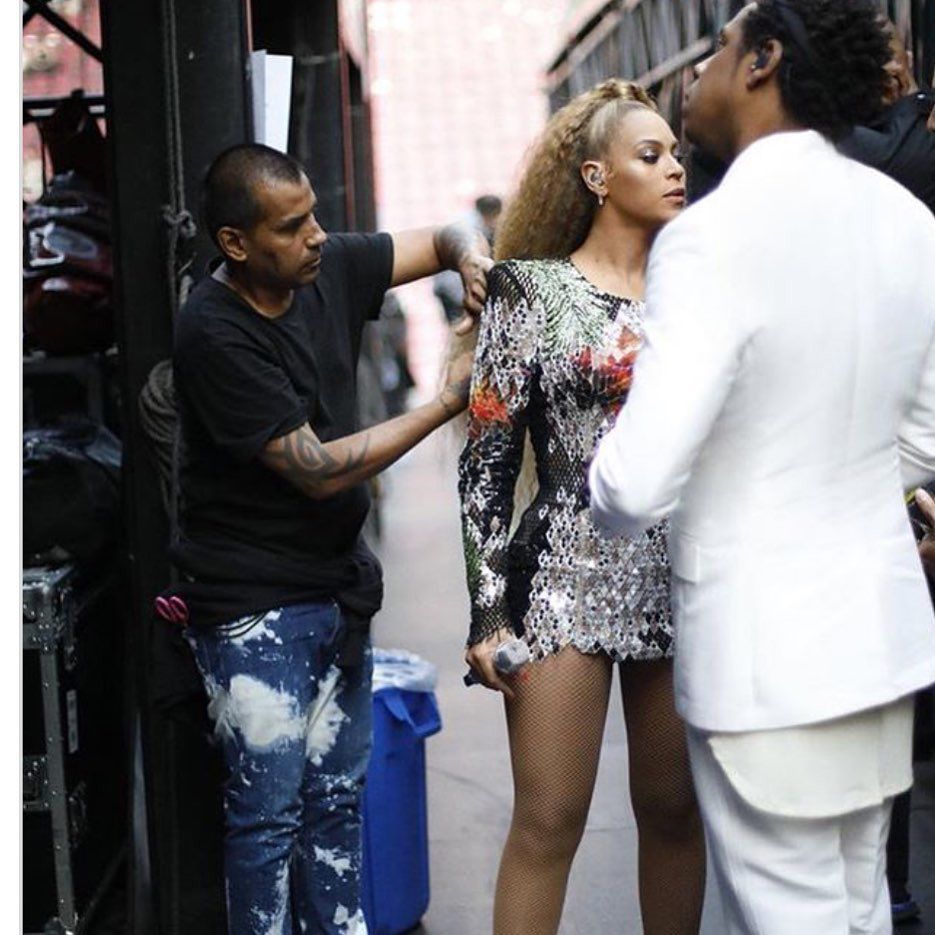(Trinidad Guardian) One of the standout hair moments in Beyoncé’s film Black is King is a 30-foot-long braided wig. There is a scene in the film where she stands on a ladder with the braids hanging down. It is a stunning visual moment.
But, as her Trini-born hairstylist tells it, it was also done at great risk. Neal Farinah says, “That wig was so heavy, it could have pulled her off the ladder.”
But she did it, despite the risk, because the hairpiece helped tell a story.
Perhaps she also did it to help elevate the way black hairstyles are viewed outside of the film set.
The film, or visual album, Black is King, is a re-telling of the Disney classic The Lion King.
In it, Beyoncé Knowles-Carter reclaims the narrative by interweaving traditional African aesthetics with African American imagery to tell the story of one boy’s journey to his destiny in an Afro-futuristic world where blackness is revered. Hair is an important part of that narrative.
When she told her hairstylist of 15 years about her “dream project” he was instantly sold. Born in Arima, Farinah moved to the United States, where he quickly learned that hairstylists there have to make a choice about the type of hair they were going to do.

Farinah found that he had moved from multi-cultural Trinidad, where he did all types of hair, to having to decide whether he was going to make his living doing black or white hair.
Yet despite eventually owning his own very successful black salon, when his star client gave him a mandate to create a variety of African inspired looks for her film, Farinah found that he still had a lot to learn.
He says researching African hair culture has become his new obsession, and it is something he finds himself doing still, more than a year after they completed filming.
He also realised, very quickly that he needed help to create all of the hairpieces needed for the project. He called his manager frantically.
“Hey! I need some talented hairstylists. Go on social media and find me one who can help me out.”
Help came from all over, but quite of few of them were from his home country.
“I have so many amazing Caribbean women who worked with me on this,” he said.
One of those amazing Caribbean women was Xia Charles. She found working on this project surreal.
“You know, just coming from Tobago, I’m from country, I’m from Belle Garden in the country, and sometimes I have to pinch myself.”
She says the team created a vibe in the salon, even playing soca while working on the pieces for the shoot. They created a sense of camaraderie on set. If someone was struggling with a piece, help was close by. She loved it.
Charles, who studied Law and Economics at university, now considers herself a braider. She loves how braids were treated in the film.
“I think when people think about braids, it’s common. We know it from when we were younger. That’s what our parents did to our hair,” she said. But there was nothing common about how braids were used in this film.
“I was just pleased to see how Beyoncé made it such a focal point of her movie,” she said.
“I appreciated that, and I think persons appreciate braiders more now because they see the artistic side of us.”
Farinah agrees, “Natural, faux locs, dread locs, pressed it, straighten it; that’s a choice a black woman should have.”
He says times are changing and he is seeing more women embracing their natural hair, and more importantly, he is seeing more companies allowing women this freedom. Which he says is only right.

